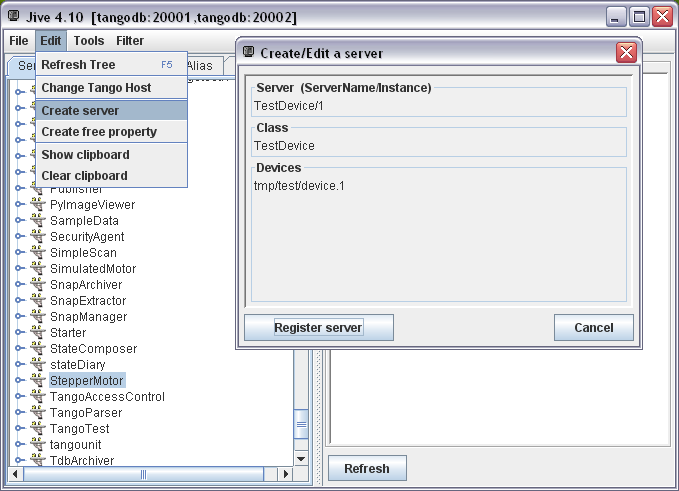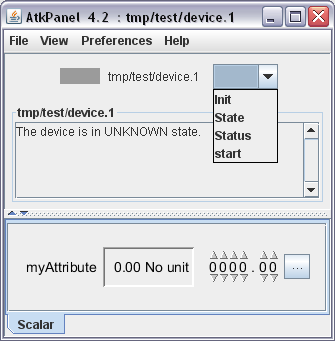This paper is a documentation intended for developers. It described how to build a Java Tango Device. A background in the Java language is strongly recommended. The pre-requisites are:
-
The Tango concepts: attribute, command, device property… Please read the Tango reference manual : tango-controls.org, tango-controls documentation
-
The Java language Standard Edition : http://www.oracle.com/technetwork/java/javase/documentation/index.html
-
The concept of annotations introduced in Java version 5: http://docs.oracle.com/javase/tutorial/java/javaOO/annotations.html
-
Java beans : http://en.wikipedia.org/wiki/JavaBeans
A first device
Here is the code of a simple device class with one Tango command and one attribute (see annexes for full code):
@Device
public class TestDevice {
private final Logger logger = LoggerFactory.getLogger(TestDevice.class);
/**
* Attribute myAttribute READ WRITE, type DevDouble.
*/
@Attribute
public double myAttribute;
/**
* Starts the server.
*/
public static void main(final String[] args) {
ServerManager.getInstance().start(args, TestDevice.class);
}
/**
* init device
*/
@Init
public void init() {
logger.debug("init");
}
/**
* delete device
*/
@Delete
public void delete() {
logger.debug("delete");
}
/**
* Execute command start. Type VOID-VOID
*/
@Command
public void start() {
logger.debug("start");
}
/**
* Read attribute myAttribute.
*
* @return
*/
public double getMyAttribute() {
logger.debug("getMyAttribute {}", myAttribute);
return myAttribute;
}
/**
* Write attribute myAttribute
*
* @param myAttribute
*/
public void setMyAttribute(final double myAttribute) {
logger.debug("setMyAttribute {}", myAttribute);
this.myAttribute = myAttribute;
}
Before starting this device, it has to be declared in the Tango database with Jive menu “Create server”. Hereafter, a server “TestDevice/1” with one device “tmp/test/device.1” is created:

The newly added device must appear in the device tree:

As the TestDevice class of this device has a main method, it can be started as a standard Java program:
-
A Java system property “TANGO_HOST” must be defined. For instance “tangodb:20001,tangodb:20002” , like in the Jive screenshot above.
-
The mandatory program argument is the instance name (1 in above example).
Once started, the device can be tested. Here is an example of the Tango generic client ATKPanel:

NB: In Tango, the commands Init, State, Status and the attributes State, Status are created by default for any device.
Here is a first code explanation:
-
The @Device annotation on a class defines this class as a Tango Device.
-
The @Attribute annotation defines a field as a Tango attribute:
- The attribute type is defined by the field type;
- If this field has a getter, it is a READ attribute;
- If it has a setter, it is a WRITE attribute;
- If it has both getter and setter, it is a READ/WRITE attribute.
-
The annotation @Command defines a method as a Tango command:
- The parameter type defines the input type
- The return type defines the output type
-
The @Init annotation defines a method called:
- At server startup;
- When “Init” command is called.
-
The @Delete annotation defines a method called:
- At server shutdown;
- At “Init” command, just before @Init.
-
The main method starts the server
-
The logger field is to log.
The following chapters will describes all this in details.